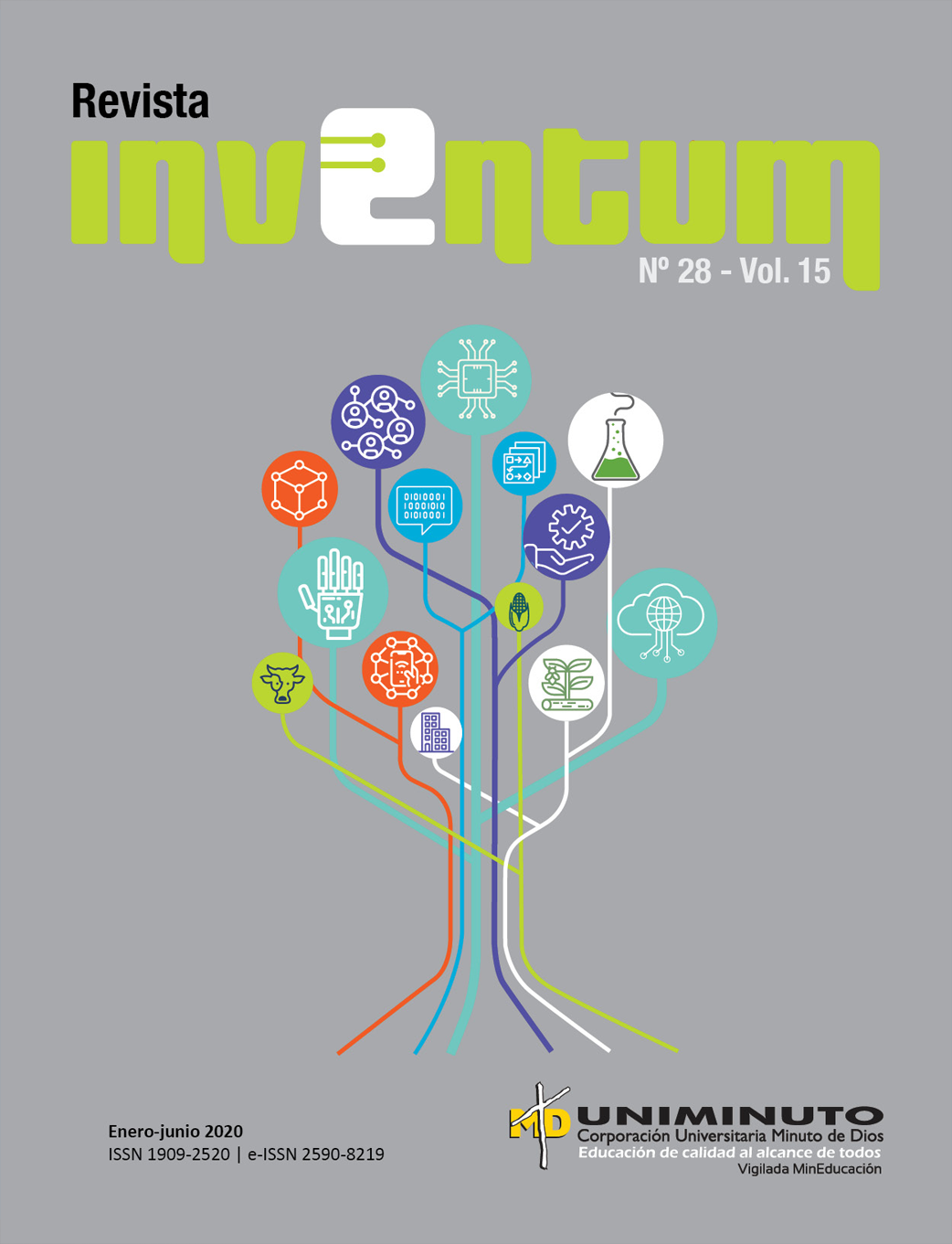Herramienta para la extracción y análisis de información obtenida de la red social Twitter, como apoyo a los procedimientos: nuevo registro calificado y renovación de registros
Barra lateral del artículo
Cómo citar
Detalles del artículo
Se solicita a los autores que diligencien el documento de cesión de derechos de autor sobre el artículo, para que sea posible su edición, publicación y distribución en cualquier medio y modalidad: medios electrónicos, CD ROM, impresos o cualquier otra forma, con fines exclusivamente científicos, educativos y culturales
- La obra pertenece a UNIMINUTO.
- Dada la naturaleza de UNIMINUTO como Institución de Educación Superior, con un modelo universitario innovador para ofrecer Educación de alta calidad, de fácil acceso, integral y flexible; para formar profesionales altamente competentes, éticamente responsables y líderes de procesos de transformación social, EL CEDENTE ha decidido ceder los derechos patrimoniales de su OBRA, que adelante se detalla para que sea explotado por ésta
- El querer de EL CEDENTE es ceder a título gratuito los derechos patrimoniales de la OBRA a UNIMINUTO con fines académicos.
Contenido principal del artículo
Resumen
El presente artículo se deriva del proyecto de investigación que se viene desarrollando en la ciudad de Popayán, Colombia, al interior del programa de Ingeniería de Sistemas de la Universidad Nacional Abierta y a Distancia (UNAD), el cual describe los avances preliminares del desarrollo de la herramienta de software denominada ARS-SIAVA, que permite la extracción de datos de las redes sociales, para identificar de una manera oportuna las tendencias tecnológicas en la formación académica, comportamientos del mercado laboral en las áreas de las tecnologías de la información (TI), tanto en contextos regionales, nacionales e internacionales, mediante la recolección y el análisis de información obtenida de la red social Twitter. Este insumo se convierte en una base para los procesos de autoevaluación en la renovación y obtención de nuevos registros calificados por parte del Ministerio de Educación Nacional, especialmente como apoyo a la justificación de los programas que corresponden a la condición 2 de los criterios de calidad establecidos por el Ministerio de Educación en la obtención de registros calificados. En el desarrollo de la investigación se contemplaron dos aspectos: una primera parte donde se realiza minería de textos, de la cual se obtienen datos mediante una API, que se recopilan en forma de tweets, importados a formato CSV, que es entendible para el lenguaje de programación R, y que previamente pasa por un proceso de depuración y adecuación de acuerdo con los requerimientos de este lenguaje. La segunda parte corresponde al análisis de sentimientos, para lo cual se dispone de un algoritmo que mediante un entrenamiento manual que por medio de Machine Learning, aprende y es capaz de predecir tendencias, las cuales se proyectan en gráficos, nubes de palabras además de tablas de frecuencias y visualización de datos estadísticos que pueden aportar en la toma de decisiones.
Referencias
[2] Z. Pereira. (2011). “Los diseños de método mixto en la investigación en educación: Una
experiencia concreta”, Revista Electrónica Educare. Vol. XV, n°. 1, pp. 15-29, [En línea].
Disponible en: https://www.redalyc.org/pdf/1941/194118804003.pdf
[3] J. Cárdenas. (2016). Análisis de redes sociales. «Networks provide happiness». [En línea].
Disponible en: http://networksprovidehappiness.com/analisis-de-redes-sociales-es/
[4] H. Alcántara. (2013). Análisis egocéntrico de redes sociales: El caso de los representantes
sectoriales en el consejo territorial de planeación del municipio de Arauca (2012 – 2015).
[En línea]. Disponible en: https://repositorio.unal.edu.co/handle/unal/20245
[5] A. Rodríguez y P. Santamaría. (2012). Análisis del uso de las redes sociales en Internet
Facebook y Twitter en las Universidades Españolas «researchgate». [En línea]. Disponible en: https://www.researchgate.net/publication/277264445_Analisis_del_uso_de_las_redes_sociales_en_Internet_Facebook_y_Twitter_en_las_Universidades_espanolas.
[6] M. Criado, Ramilo y D. Mercedes. (2012). Las Redes Sociales Digitales en la Gestión y las
Políticas Públicas. Avances y Desafíos para un Gobierno Abierto, «Ucatalunya,». [En línea].
Disponible en: https://www.academia.edu/27641025/Las_Redes_Sociales_Digitales_
en_la_Gesti%C3%B3n_y_las_Pol%C3%ADticas_P%C3%BAblicas._Avances_y_Desaf%C3%ADos_
para_un_Gobierno_Abierto
[7] L. Navarro y J. Salazar. (2007). “Análisis de redes sociales aplicado a redes de investigación
en ciencia y tecnología”, Síntesis tecnológica. Vol. 3, n° 2. [En línea]. Disponible en: http://
revistas.uach.cl/pdf/sintec/v3n2/art03.pdf
[8] J. B. Montoya y T. C. Carvalho. (2016). “Flujo documental entre áreas administrativas
de una entidad bancaria: una aproximación desde el análisis de redes sociales (ARS).”
Biblios. n°. 62. [En línea]. Disponible en: https://www.redalyc.org/jatsRepo/161/16144742004/html/index.html
[9] D. Desale. (2016). “Análisis de Redes Sociales”. [En línea]. Disponible en: http://ars-uns.blogspot.com/2016/06/30-paquetes-de-software-de-ars.html
[10] A. Arcón. (2017). “5 librerías de R para la limpieza y exploración de datos, «Universo
Machine Learning”. [En línea]. Disponible en: https://conocemachinelearning.wordpress.
com/2017/06/23/5-librerias-de-r-para-lalimpieza-y-exploracion-de-datos/





